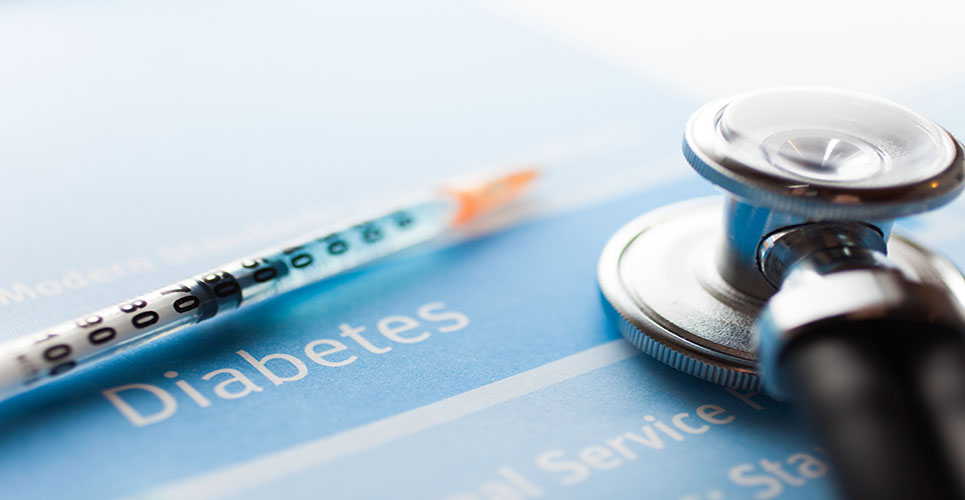teaser
Novartis announced today new data showing that a significantly higher proportion of type 2 diabetes patients responded to treatment with either Galvus® (vildagliptin), when added to existing oral anti-diabetes therapy, or Eucreas® (vildagliptin/metformin) compared to combinations of other oral anti-diabetes therapies.(2)
Response to treatment in the global, 45,000-patient Effectiveness of Diabetes control with vildaGliptin and vildagliptin/mEtformin (EDGE) study was defined as an HbA1c drop of greater than 0.3% without any of the predefined tolerability issues.(2) The results of the observational EDGE study were presented today at the 48th Annual Meeting of the European Association for the Study of Diabetes (EASD) in Berlin.(2)
“The EDGE study, which was one of the largest observational studies ever conducted in type 2 diabetes, provides patients and physicians real-world evidence of the effectiveness of Galvus,” said Timothy Maloney, Global Business Franchise Head, Primary Care, Novartis. “The results of EDGE are consistent with the safety and efficacy profile established in vildagliptin’s robust clinical trial program.”
Type 2 diabetes is a progressive disease in which it becomes increasingly difficult to manage blood sugar levels with one therapy alone.(3,4) However, adding additional therapies can increase the risk of adverse events, including hypoglycemia, weight gain and gastro-intestinal side effects.(4) The EDGE study demonstrates the real-world effectiveness of vildagliptin in combination with other oral anti-diabetes therapies when treating patients with type 2 diabetes.(2)
Overall 55.4% of patients in the vildagliptin group and 51.3% of patients in the comparator group had a decrease in HbA1c of >0.3% without the predefined tolerability issues of peripheral edema, hypoglycemia, GI events and weight gain after 12 months of treatment (adjusted OR 1.49 [95% CI:1.42 – 1.55]).(2) In the EDGE study, vildagliptin in combination with another therapy was shown to achieve a 1.19% reduction in HbA1c from baseline compared to mean reductions in HbA1c of 0.99% in the comparator group.(1)
The incidence of adverse events was similar across both treatment groups, occurring in 5.28% in the vildagliptin arm and 5.73% in the comparator arm.(2)
“In addition to providing data on the benefit and risk profiles of specific treatments, EDGE is important because it offers information on when doctors around the world decide to step up oral glucose lowering therapy in type 2 diabetes,” said Chantal Mathieu, Professor of Medicine at the University of Leuven, Belgium. “Despite guidelines recommending combination treatment should be initiated when HbA1c levels remain above 7.0% for three months, clinical inertia appears to be widespread with physicians waiting until blood sugar levels are above 8.0% to add another therapy.”
Clinicians who took part in the EDGE study initiated combination therapy at a mean HbA1c baseline of 8.16%.(5) The baseline HbA1c for initiation of combination therapy varied considerably by region with a mean of 7.7% in East Asia, 7.9% in Europe, 8.5% in Latin America, 8.5% in the Middle East and 8.6% in India, suggesting the need for earlier use of combination therapy.(5)
About the EDGE study
The Novartis-sponsored EDGE study was a 12-month, multi-national, observational cohort study that enrolled patients in 27 countries, across five regions (East Asia, Europe, India, Latin America and the Middle East).(2)
Patients became eligible for the study after an add-on treatment was chosen by their physician based on the patient’s need.(1) Patients were assigned to one of two groups:
Vildagliptin in combination with another oral anti-diabetic drug (OAD).(2)
Other OAD combinations, including any sulphonylurea, thiazolidinedione, glinide, α-glucosidase inhibitor or metformin, but excluding any DPP-4 inhibitor or GLP-1 mimetics or analogues.(2)
The primary endpoint was the proportion of patients responding to treatment (HbA1c reduction of >0.3%) without any of the following predefined tolerability issues: peripheral edema, hypoglycemic events, discontinuation due to gastrointestinal events or weight gain (≥5%).(2)
The study also evaluated the following secondary effectiveness endpoints:
- Decrease in HbA1c >0.3% from baseline to end of study without peripheral edema, proven hypoglycemic events, discontinuation due to gastrointestinal events or weight gain ≥ 3%2
- Decrease in HbA1c >0.3% from baseline to end of study without weight gain ≥ 3% or proven hypoglycemic events2
- HbA1c <7% at end of study without proven hypoglycemic events or weight gain ≥ 3% and baseline HbA1c >7%2
The safety endpoints were the incidence of death, serious adverse events (SAEs) and adverse events (AEs) and the estimated relative death, SAE and AE risk.(2)
References
- Novartis Pharma AG data on file.
- Mathieu C et al. Effectiveness and safety of vildagliptin compared with other oral anti-diabetic drugs in patients with type 2 diabetes: results from a large worldwide cohort study (EDGE). Poster 863 presented at EASD 2012.
- World Health Organization. Diabetes Fact Sheet Noº312. http://www.who.int/mediacentre/factsheets/fs312/en/index.html. Accessed September 7, 2012.
- Inzucchi SE et al. Management of hyperglycemia in type 2 diabetes: a patient-centered approach. Position statement of the American Diabetes Association (ADA) and the European Association for the Study of Diabetes (EASD). Diabetologia 2012;55:1577-1596.
- Bader G et al. Effectiveness of diabetes control with vildagliptin vs. other OADs: baseline characteristics of patients enrolled in the EDGE study. ADA abstracts 2449-PO. 72nd Scientific Sessions: 2012;June: 61 (suppl 1).

